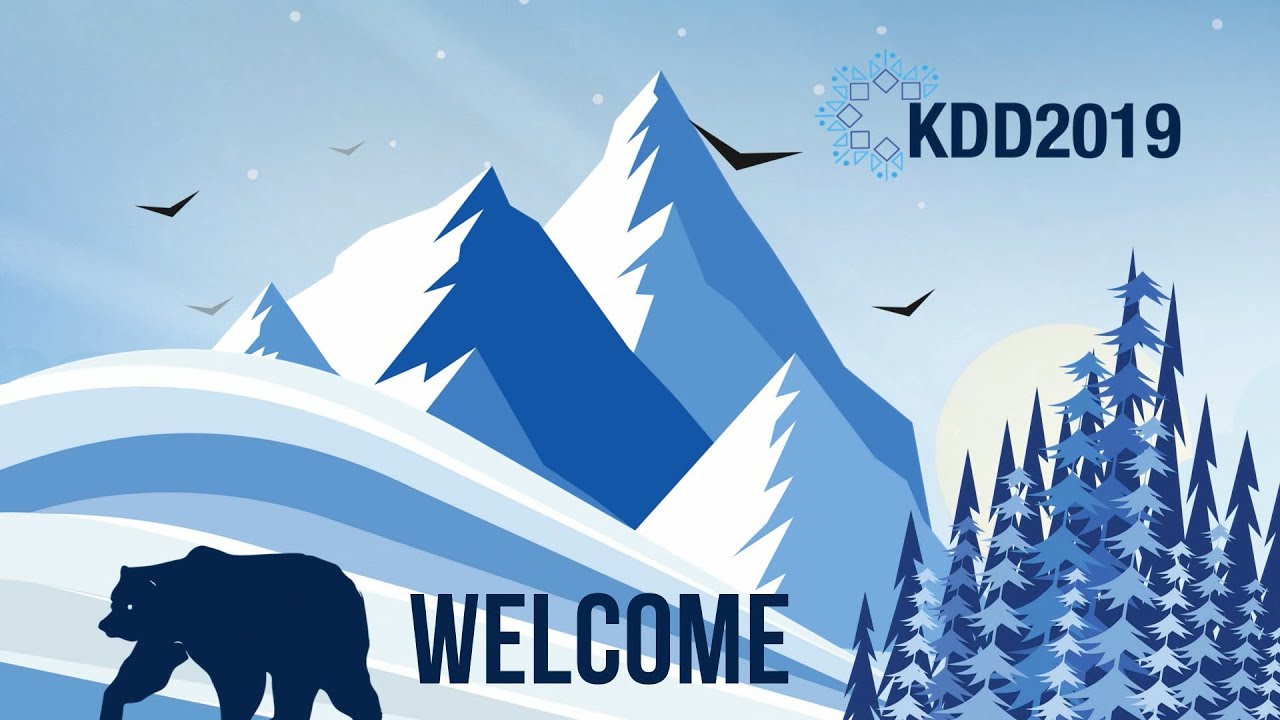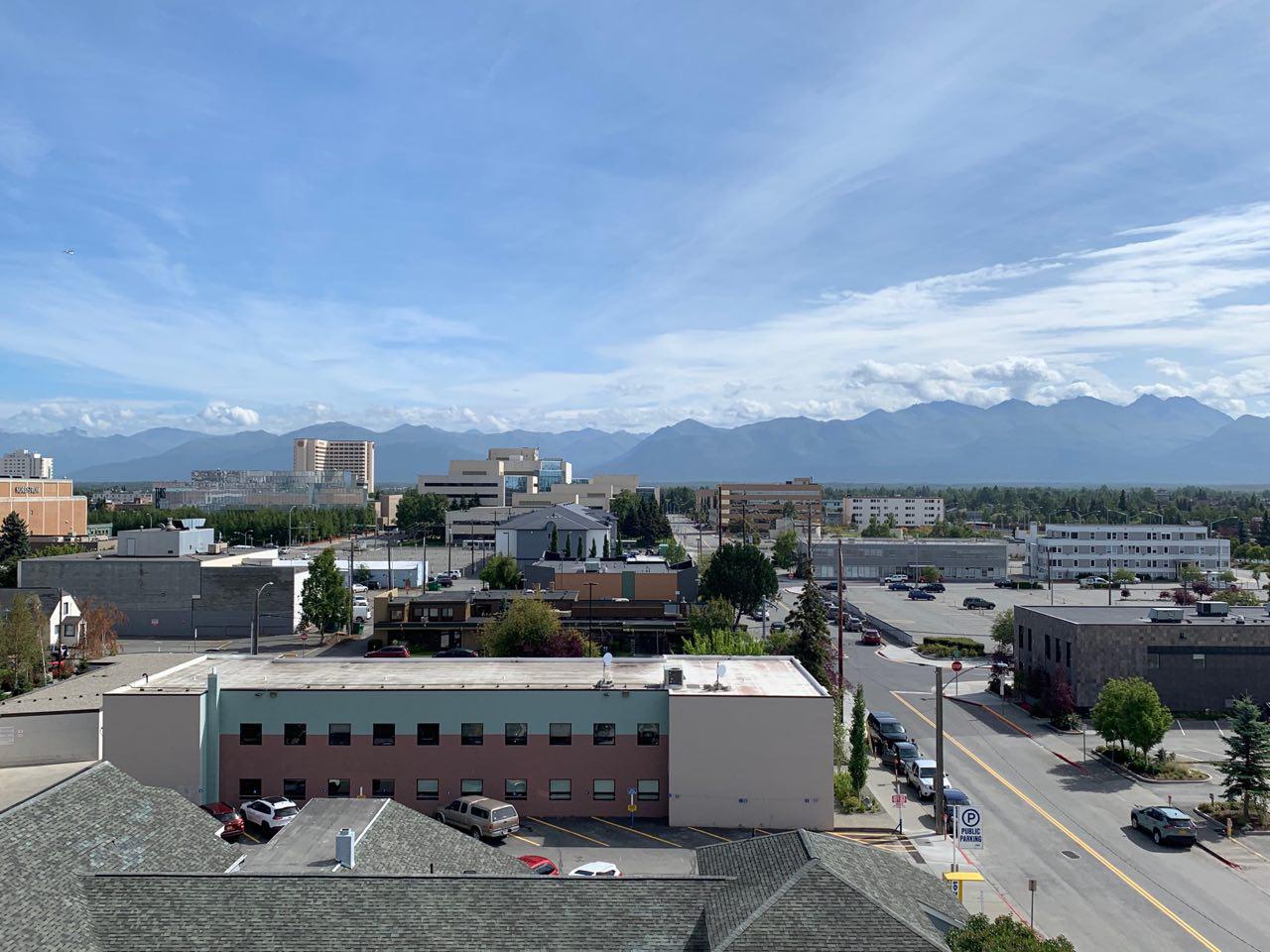Trip to Alaska, or KDD'19 through the eyes of an eyewitness
It's no secret that scientists are very fond of exploring the world. Therefore, large conferences are always held in the historical and cultural capitals of the world. These cities are convenient for visiting to people from all over the world and are interesting from a tourist point of view. But sometimes the desire to explore the new and the unknown takes over, and the city of the conference becomes, for example, Anchorage in Alaska. Also did not hear about him before? And this year one of the largest conferences KDD'19 was held there .

We at Antiplagiarism could not miss such an event and set off to meet adventures on the other side of the globe. What happened at KDD 2019 - read our review!
My journey began with a 12-hour flight to Los Angeles, where my friend’s local friend had already met me at the airport. Initially, I planned to walk around the city on my own, but the argument “you won’t see anything without a car in LA, and nobody is lucky to get you back to the airport in traffic jams” sounded quite convincing. Well, you can’t really get anywhere without a car in the city of angels - there is practically no public transport here, and the one that is is in quite indecent condition. LA itself looked like on a list: huge traffic jams, a city-wide beach, Hollywood hills, the Beverly Hills area, lunch in a classic American fast food and sunset on the beach. But all interesting things tend to end, and the next flight was waiting for me.

Since I flew from the other hemisphere, my body did not think anything, so the 5-hour night flight to Alaska went unnoticed for me. In order to somehow recover, I went to bed for 4 hours, however, as always.
Change of time zones subsequently made itself felt: all the time I wanted to sleep. In order not to fall completely, I went to register. Moreover, the walk from the hostel to the conference venue allowed to cheer up a little.
The conference device was not unusual in anything: several sessions scattered in different rooms, where presentations and discussions of new approaches to machine learning and cool solutions and implementations take place. One caveat: in the case of KDD'19, the entire conference occupied two huge conference buildings with several floors with a bunch of audiences on each of them. As always, some presentations aroused such interest that one could not even get into the audience through a crowd of people. In a word, each participant in the conference could find something interesting specifically for himself. KDD always offers many different formats for presenting information, so there was plenty to choose from. These are reports from famous scientists who broadcast to large "streaming" audiences, and presentations from newcomers to science in small "seminar" rooms. For those who want to not only listen, but also practice, there are “hands-on tutorials” where representatives of different fields conduct practical exercises. For example, Amazon’s tutorial on how to use their cloud computing service was quite popular. However, the first day was quite light: it was set aside for registration, there were no serious presentations here, only welcome words and review lectures. So I went to my room, getting ready for the upcoming performances.

B - security, but you won’t do anything for the sake of science. And in general, it was not in vain that the PhysTech finished.
The second day was completely devoted to workshops. In simple words, a workshop is a meeting where participants exchange experience in solving problems in a certain field. Since our department in the Anti-Plagiarism company is engaged in a cross-language borrowing search system , our work, which I presented at the conference, immediately suited the topics of two workshops: Deep Learning for Education and Truth Discovery and Fact Checking. Before my reports, I managed to see some interesting presentations. It is worth noting the story of Ruslan Salakhutdinov about the XLNet model. Of course, they wrote about this model before KDD, but listening directly from one of the authors was much more interesting. Part of the report was devoted to a new trend in machine learning: instead of teaching heavy models, use pre-trained models and just customize them to fit your needs. This is understandable: most companies that somehow use complex architectures in their activities do not have enough computing power to learn from scratch. And retraining ready-made models for your tasks is much simpler and faster. In addition, the quality of work of such models is much higher than that of simplified analogues.
All the time left after lunch was spent searching for their audiences, communicating with the heads of workshops and other organizational details. My first report was at the Deep Learning for Education workshop. He was right after the coffee break, so the audience was empty. I outlined how the cross-language borrowing search model and some implementation details work. At the end of the report, they asked if this system was already working in practice and were surprised to receive an affirmative answer. The next workshop, Truth Discovery and Fact Checking , already had a full audience. After the speech, there were several questions. For example, one of the listeners asked if there were specific examples of such borrowings. My answer that this, unfortunately, is a fairly popular practice among students of higher institutions of Russia and the CIS countries, plunged him into a slight misunderstanding. In general, the report was received with interest, the audience was clearly interested in using cross-lang projects to solve practical problems in the field of education.
The range of topics, even inside one workshop, is very wide. For example, a student from the University of California at Berkeley spoke in front of me and talked about a system that helps US students choose alternative courses. Given the entire course of subjects taken by a particular student, the system offers him new courses that are most likely to be interesting to this student. A database of students from the University of California over the past 10 years was taken as training data. And this is information about almost 165 thousand students during the training! Another report was devoted to the system of automatic distribution of scholarships among students. In US universities, the issue of scholarships is often much more complicated than in Russia, and requires the analysis of a large amount of information about the student. As a result, the decision of the scholarship commission is made for a very long time. It would be very convenient to have a system that analyzed and distributed scholarships. After wandering around the rest of the workshops the rest of the time, I went home with a sense of accomplishment.
The next day, the main conference began. At the same time, a session was organized at which the company sponsors talked about their latest developments in the mode of communication. It was quite interesting to go around, look at Nvidia’s Titan RTX live, listen to Facebook Research developments in the field of image recognition, and learn about many other industry giants, some of which I had never heard of before.

The fourth day also consisted mainly of reports. One, for example, was devoted to the problem of interpretability of machine learning models. More precisely, its absence in many cases. Modern models quite accurately solve problems in different fields of knowledge, as they say, "out-of-the-box". However, in many cases it is necessary to understand why the model made this or that decision. In these cases, interpretability is important. A rather popular method is the local approximation of models, which allows you to consider the behavior of the model using a specific example and with a certain degree of accuracy to understand what influenced the decision. The presentation was devoted to similar methods and their improvements.

Mountains are not there only where there is a bay. So you can’t just escape from this city.
At the end of the day, a banquet dedicated to the 25th anniversary of KDD was waiting for everyone. Once again I was convinced that this was a large-scale conference, but holding a banquet for all participants at once in one room was, of course, a controversial decision.

The next day was the final one, and it was felt: the number of listeners greatly decreased (perhaps this was facilitated by the bar at the banquet, but this is not certain). Yes, and the reports were mostly review. Many lectures highlighted current problems and tasks that need to be addressed. Data processing, growing at an incredible speed, cybersecurity, medical tasks - in a word, the conference, although it is highly specialized, cannot be said for the spectrum of the topics discussed. But, again, all the fun ends sooner or later, and it was time for me to go home.
Before leaving, I decided to take a break and explore the surroundings. When driving from Anchorage Airport, a friendly taxi driver recommended climbing Mount Flattop - a local attraction with a “fantastic view”. Judging by the number of people who met on the way to the top, this is really a local legend, although I would not say that the climb is quite simple - you need to overcome a steep rock with a bunch of crumbling stones along the way. But the effort was worth it - the view from the top is truly breathtaking!

The return trip was not something special. Walking around Los Angeles was no longer foreseen, so I spent part of the transfer time lying on an empty California beach (no one will go there at 8 in the morning). A long preflight search, another 12 hours in the air, and I finally in rainy and cold Moscow. In general, the conference left only positive impressions. Gathering in one place people of different interests, nationalities, views is really worth enormous effort. And this is also done so that everyone has something to listen to or tell, and everything happens in an atmosphere conducive to this. I think it was worth it to fly to almost the opposite side of the planet.
All Articles